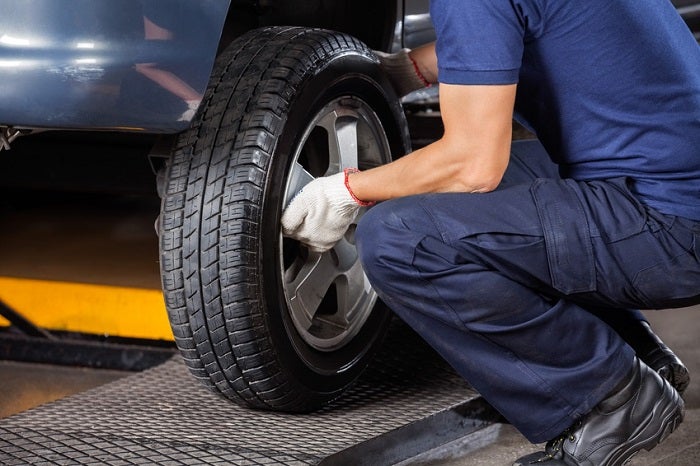Drive with Self-confidence: GMC Tires Service at Morris Tires
Drive with Self-confidence: GMC Tires Service at Morris Tires
Blog Article
Tire Service: The Effect of Climate Condition
When it comes to ensuring optimal efficiency and safety on the roadway, comprehending the effect of weather condition conditions on tire service is essential. GMC Tire Service. In this discussion, we will explore the complex relationship between weather conditions and tire solution, losing light on the significance of weather-specific tire upkeep practices and considerations.
Heat and Tire Efficiency
When exposed to high temperature levels, tires experience adjustments in performance that can substantially influence automobile security and handling. The warm created from prolonged driving or heat conditions creates the tire rubber to soften, leading to minimized walk life and increased wear. As the rubber comes to be softer, the tire's grasp when driving diminishes, affecting braking ranges and total grip. In severe instances, too much heat can also cause tire blowouts, posing a severe security risk to the car and its owners.

Cold Climate Impacts
Cold weather condition conditions can have a considerable influence on tire performance and security. In cold climate, tires might likewise lose air pressure more quickly, which can influence managing and gas efficiency.
To reduce the impacts of cool climate on tires, it is essential to regularly examine tire pressure and inflate them to the supplier's recommended degrees. Using winter season or all-season tires made for winter conditions can also enhance grip and hold on icy or snowy roadways. Proper tire upkeep, including routine examinations for wear and damage, becomes much more crucial throughout cooler months to ensure optimal performance and security.
Rainy Issues Influence
Tires with worn-out footsteps are extra prone to hydroplaning, where a layer of water builds up between the roadway and the tire surface, leading to loss of traction. To combat this, vehicle drivers ought to routinely inspect their tires for ample step deepness and take into consideration spending in tires particularly linked here created for wet conditions.
In addition, rainy climate can additionally decrease presence, making it challenging for chauffeurs to see the roadway ahead clearly (GMC Tire Service). In such conditions, it is necessary to adjust driving speeds accordingly and keep a safe following range to enable sudden stops. Appropriately filled with air tires can likewise assist in maintaining control on wet roadways by supplying far better handling and grasp
Snow and Tire Safety And Security
Snow-covered roads pose unique challenges for drivers, emphasizing the importance of appropriate tire choice and upkeep. When driving in snowy problems, having the right tires can make a substantial distinction in safety and efficiency. Winter months tires are developed with special rubber compounds and walk patterns to provide far better traction on snow and ice compared to all-season tires. The much deeper footsteps and sipes of winter months tires aid hold the road better, lowering the threat of slipping and sliding.

Moreover, drivers ought to take into consideration mounting tire chains in extreme snowy problems. Tire chains supply extra grip by grasping the snow and ice, enhancing stability here are the findings and control. It is important to comply with maker guidelines when using and installing tire chains to avoid damage to the tires and automobile (GMC Tire Service). By selecting the best tires, maintaining appropriate rising cost of living, and thinking about additional traction help like tire chains, drivers can improve their safety when browsing snow-covered roads.
Weather-Related Tire Upkeep
Weather-related tire maintenance incorporates a range of techniques aimed at guaranteeing optimal tire feature and durability in different climate scenarios. One crucial aspect of weather-related tire maintenance is tire pressure policy. Inspecting tire step consistently and replacing tires when step wear reaches a certain depth is important for keeping traction and security in unfavorable weather condition.
Verdict
In verdict, climate condition have a substantial influence on tire efficiency and safety and security. From warm impacting tire stress and use to cool climate lowering traction, it is necessary to take into consideration the weather condition when keeping and utilizing tires. Rainy problems can decrease grip and bring about hydroplaning, while snow can enhance the threat of accidents if tires are not effectively furnished. you can find out more Weather-related tire maintenance is critical in guaranteeing optimum efficiency and safety and security on the roads.
In this conversation, we will certainly explore the complex connection in between weather condition problems and tire solution, shedding light on the importance of weather-specific tire upkeep methods and considerations.

Report this page